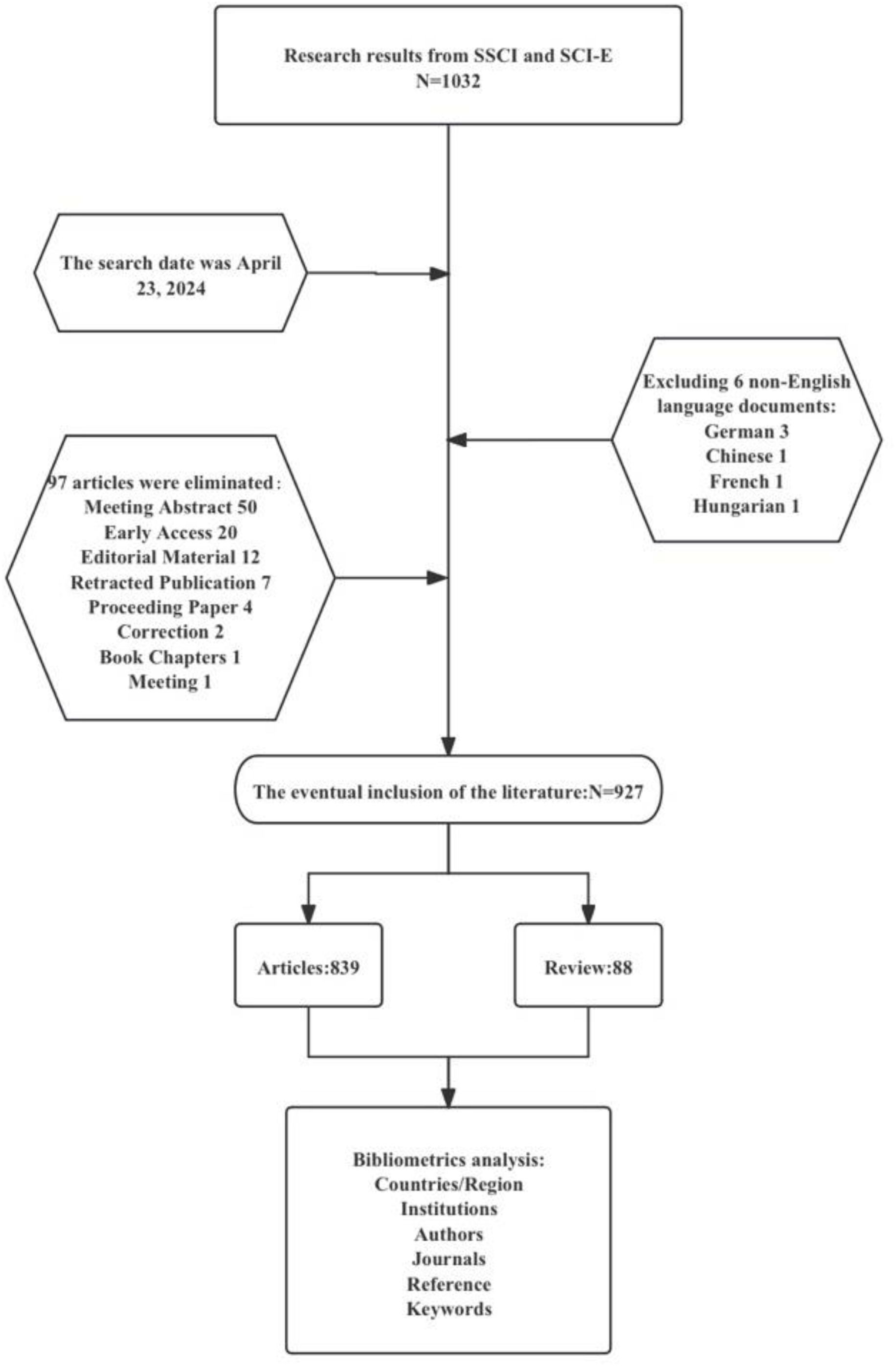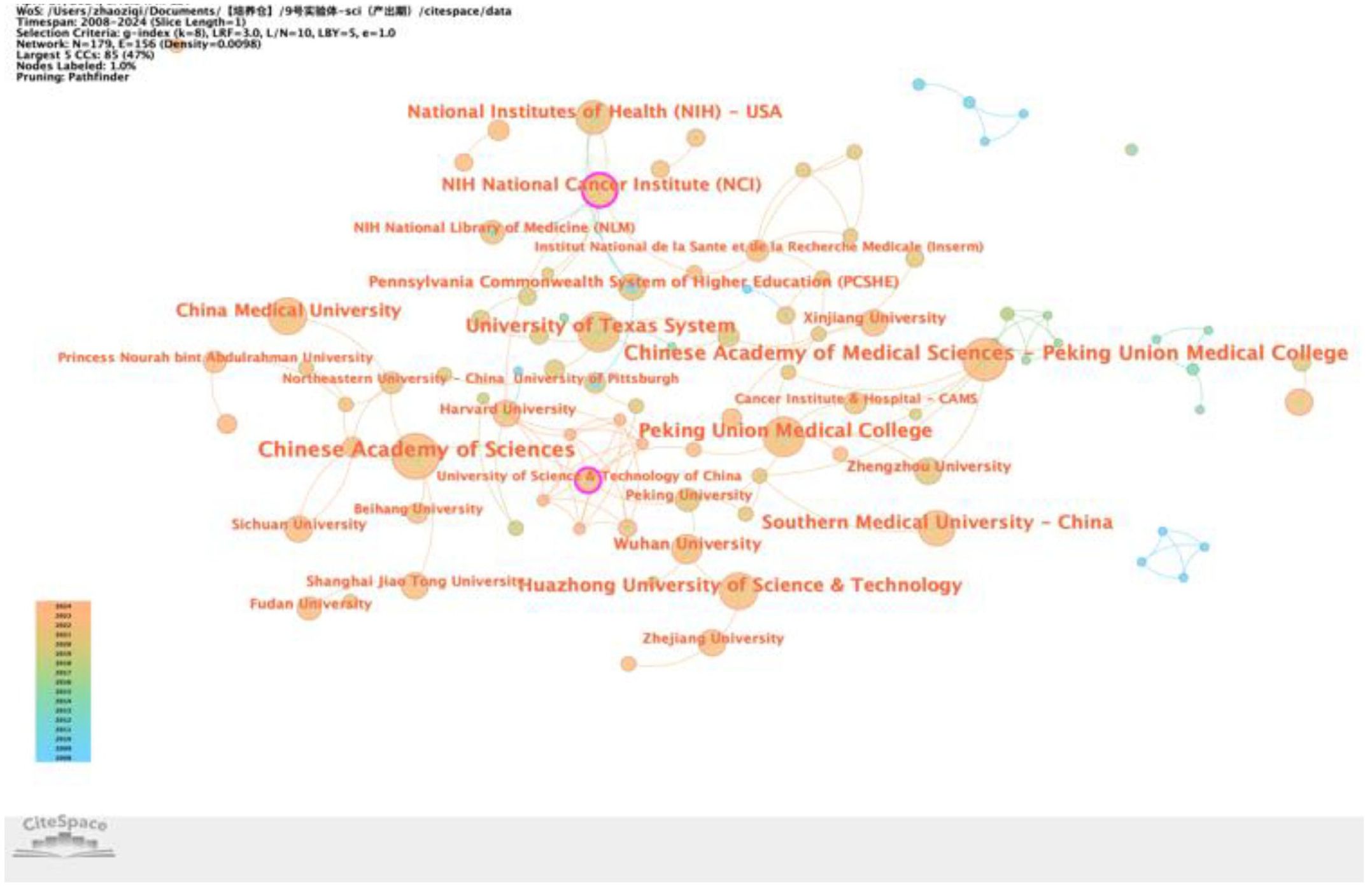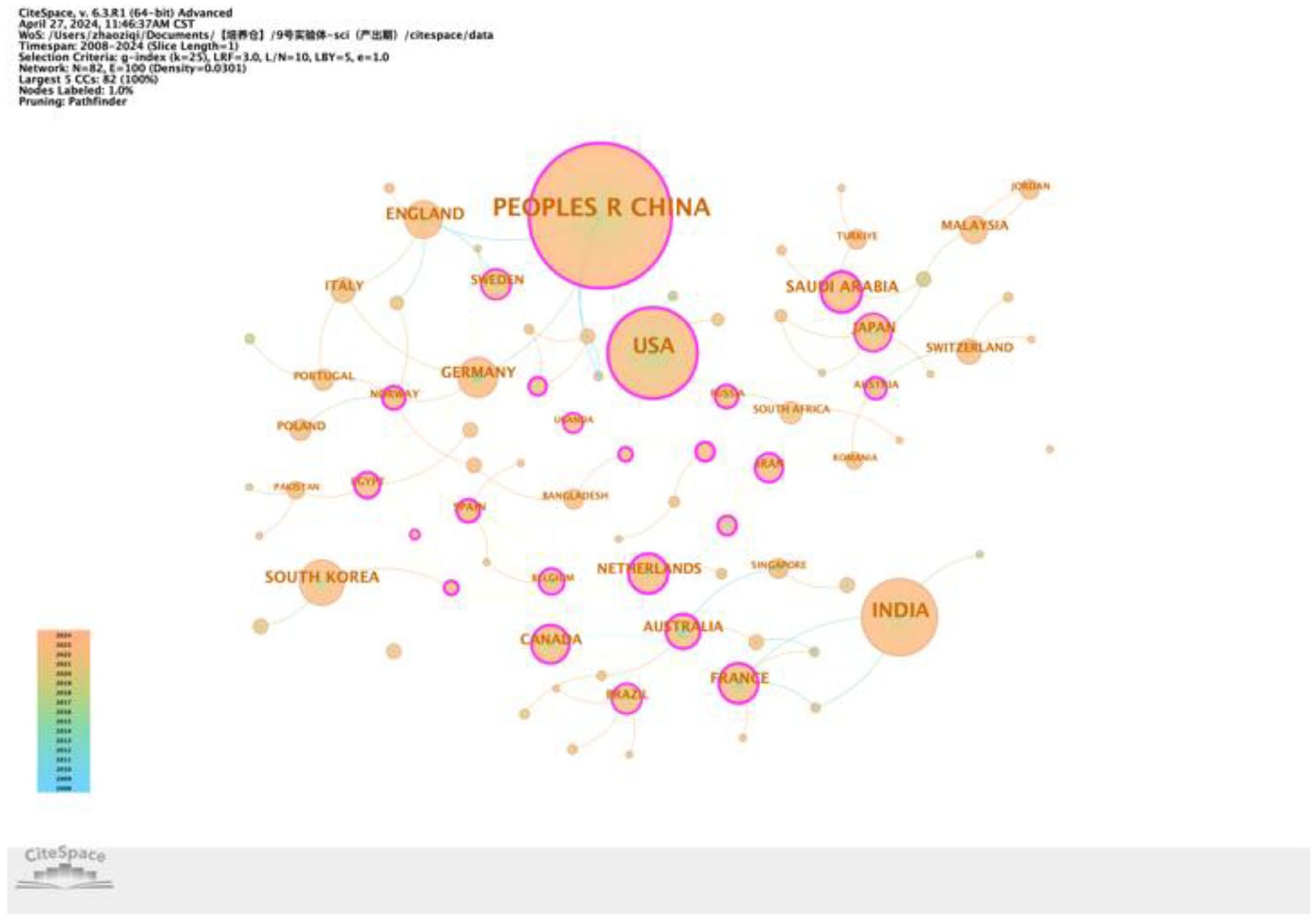- Hubei University of Chinese Medicine Affiliated Gong’an Hospital of Traditional Chinese Medicine, Jingzhou, China
By Zhao Z, Hu B, Xu K, Jiang Y, Xu X, Liu Y (2024). Front. Oncol. 14:1431142. doi: 10.3389/fonc.2024.1431142
1 Introduction
In recent years, the exponential growth in biomedical literature has garnered significant attention for bibliometrics as a method capable of quantitatively and qualitatively analyzing research trends and hotspots within a given discipline. We read with great interest the publication by Zhao et al. (1), titled “A quantitative analysis of artificial intelligence research in cervical cancer: a bibliometric approach utilizing CiteSpace and VOSviewer,” which has been published in the issue of Frontiers in Oncology. We highly support and appreciate the researchers’ work and thank them for their contributions in the field.
2 Commentary and discussion
Using bibliometrics, this study conducted an in-depth analysis of the existing publications on the application of artificial intelligence (AI) in the field of cervical cancer. The analysis reveals that AI technology is playing an increasingly important role in several key aspects of cervical cancer, including in early diagnosis screening, treatment plan formulation, prognostic evaluation, and image analysis. However, we identified several points that require clarification and correction.
Firstly, inconsistencies in the literature search and screening numbers: The manuscript states in multiple sections that 927 publications were ultimately included. However, Figure 1 (a flowchart of the retrieval process) indicates that 97 publications were excluded for not being original research or review articles and six were excluded for being non-English publications. This results in a total of 103 excluded publications. Therefore, the initial number of records identified must logically be 927 (included) + 103 (excluded) = 1,030 records. This calculation conflicts with data in Table 1, which state, “research results from SSCI and SCI-E (N = 1,032),” and the “Manual screening process” section, which states, “we preliminarily screened 1,027 relevant papers.” We recommend that the authors verify and correct these inconsistencies (1,032 in Table 1 and 1,027 in the text) to align with the flowchart data, which imply an initial count of 1,030 records.
Secondly, omission in the institution ranking (Table 2): The “Productive institutions analysis” section states, “According to the data in Table 2, the top three institutions in terms of TLS are the National Cancer Institute of the National Institutes of Health (TLS = 141), Southern Medical University (TLS = 81), and the Chinese Academy of Medical Sciences (TLS = 80).” However, examination of Table 2 revealed that Peking Union Medical College also has a TLS = 80, placing it equally third with the Chinese Academy of Medical Sciences. We recommend that the authors amend this sentence to acknowledge Peking Union Medical College as co-third place.
Thirdly, concerns regarding the CiteSpace g-index parameter (k-value): The methodology for generating the institutional collaboration network (Figure 2) states, “…setting a time span from 2008 to 2024, with a 1-year slicing length, using institutions as the node type, and setting the g-index to k = 8.” We noted that Figure 3 uses a g-index of k = 25, while all other figures generated with CiteSpace in this study have been reported to use k = 10. It is understood that, in CiteSpace, the g-index parameter (k) controls the number of nodes selected within each time slice. A higher k-value (k = 25) retains more nodes, while a lower k-value (k = 8 or k = 10) retains fewer nodes. We are concerned that the use of k = 8 (Figure 2) and k = 10 (majority of the other figures) may be significantly lower than the common default or standard value (frequently k = 25), potentially excluding too many nodes. This raises the question: Could these relatively low k-values have resulted in an incomplete representation of the networks, failing to fully capture and interpret the relevant collaborative structures or knowledge domains? We recommend that the authors justify their choice of these specific k-values and discuss whether this parameter selection might have impacted the comprehensiveness of their network visualizations and analyses.
Author contributions
ZZ: Writing – original draft, Methodology, Supervision, Conceptualization, Investigation. XL: Writing – original draft, Methodology, Supervision, Conceptualization, Investigation. HZ: Conceptualization, Supervision, Writing – original draft, Writing – review & editing.
Funding
The author(s) declare that no financial support was received for the research and/or publication of this article.
Conflict of interest
The author declares that the research was conducted in the absence of any commercial or financial relationships that could be construed as a potential conflict of interest.
Generative AI statement
The author(s) declare that no Generative AI was used in the creation of this manuscript.
Any alternative text (alt text) provided alongside figures in this article has been generated by Frontiers with the support of artificial intelligence and reasonable efforts have been made to ensure accuracy, including review by the authors wherever possible. If you identify any issues, please contact us.
Publisher’s note
All claims expressed in this article are solely those of the authors and do not necessarily represent those of their affiliated organizations, or those of the publisher, the editors and the reviewers. Any product that may be evaluated in this article, or claim that may be made by its manufacturer, is not guaranteed or endorsed by the publisher.
Reference
Keywords: cervical cancer, artificial intelligence, bibliometrics, CiteSpace, quantitative analysis
Citation: Zhang Z, Luo X and Zhao H (2025) Commentary: A quantitative analysis of artificial intelligence research in cervical cancer: a bibliometric approach utilizing CiteSpace and VOSviewer. Front. Oncol. 15:1666369. doi: 10.3389/fonc.2025.1666369
Received: 15 July 2025; Accepted: 19 August 2025;
Published: 15 October 2025.
Edited by:
Tullio Golia D’Augè, Sapienza University of Rome, ItalyReviewed by:
Matteo Terrinoni, University of Perugia, ItalyCopyright © 2025 Zhang, Luo and Zhao. This is an open-access article distributed under the terms of the Creative Commons Attribution License (CC BY). The use, distribution or reproduction in other forums is permitted, provided the original author(s) and the copyright owner(s) are credited and that the original publication in this journal is cited, in accordance with accepted academic practice. No use, distribution or reproduction is permitted which does not comply with these terms.
*Correspondence: Hua Zhao, MTUwMTI4Mjk5MEBxcS5jb20=
 Zai'xiang Zhang
Zai'xiang Zhang Hua Zhao
Hua Zhao

